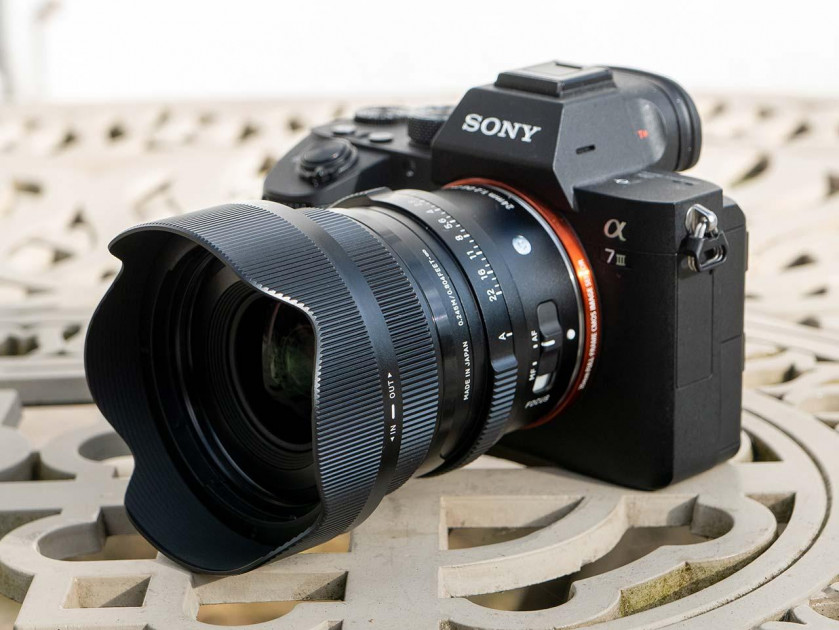The Australian photographer has been exploring the streets of Sydney since 2013. His long-term project, titled In Visible Light, is a multi-faceted portrait of the bustle and moods of the city of five million souls, sitting on the east coast of the continent. Sam Ferris is out on the streets virtually every day. Equipped with his Q2, he not only captures the city, but also defines his position and the emotional experiences he feels there. He spoke to us about who has influenced him, why he takes particular care of how he uses light, and the best spots for his pictures.
What does photography mean to you?
Photography is everything to me. It allowed me to connect with a city that I initially felt overwhelmed by, and learn to see it as my home. Through photography, I can come to terms with Sydney – a city where the cost of living has never been higher and the sense of anxiety and isolation never more acutely felt. Loneliness is powerful, and I believe the desire for connection is there in my images. Discovering street photography crystallised my earlier experience of taking photos while walking the streets of Sydney, and led me to spend hours every night immersed in the works of the ‘greats’, or devouring online content.
Your imagery holds reminiscences of Alex Webb’s and Matt Stuart’s work. Were there more influences?
That’s definitely a complement. Alex Webb was one of the first photographers whose work captured my imagination, and made me feel like I was being drawn into the world of each frame, with layered compositions, use of light, and visual complexity. I’m still blown away by how Webb was able to capture certain scenes on 35mm Kodachrome. No ‘chimping’ and no ‘spray and pray’ from the hip like so many street photographers today. Webb really is a master. Other photographers whose work I have appreciated over the years, and who have been influential for me are Joel Meyerowitz, Garry Winogrand, Harry Gruyaert, Jason Eskenazi, Trent Parke, Narelle Autio, Jesse Marlow, and Matt Stuart. All of whom photograph life as it transpires around them and manage to find magic in the everyday.
How did these influences help you develop your visual language and master the use of light and shadow?
It’s not so much about developing a visual language, but more about discovering a way of seeing and a way of being. I’m very fortunate to count Matt and Jesse as friends in the street photography community: it’s not often in life that your heroes turn out to be wonderful, generous people, whom I admire not only for their photography but for their attitudes and outlooks on life.
In Visible Light is your long-term project. Do you plan where to go to get good pictures?
I know the city well enough that I have a good understanding of where and when to be, in order to put myself in the best possible position to make interesting photographs. Sometimes I’ll only have 15 minutes – especially in the winter months when the days are far shorter –, so I have to make those minutes count. I plan my route and know where I’m going in these situations. Other days, when I have more time, I still like to explore and seek out new scenes and locations in which I haven’t made images before.
What do you focus on particularly when wandering the streets?
I tend to look for scenes where there might be a steady flow of diverse people, like the intersections of major streets, train stations, ferry terminals, or near shopping, tourist or business hubs. Some locations just feel ‘right’. I look for light and shadow, colours, oddness, the uncanny, symbolism, and the interplay between people and the environment they’re immersed in, but perhaps not aware of. I’m always attracted to streets and corners with multiple light sources – direct from the sun, and reflected from the buildings, windows and glass for layers and reflections, colourful shapes and vectors, and strong graphic elements that can be used to fill out a composition. I follow my intuition and then analyse the results later when editing.
What does light mean to you and what is your favourite way to use it?
I think once a photographer masters light, they have control over any situation they come across and can capture images that convey what they see, but also, more importantly, what they feel. Light, and by consequence, colour, is intrinsically entwined with emotion and this is perhaps the most important aspect of what I do. Light is the artifice through which I can delve deeper; it is the disclosing tool that helps me understand and express my experience of life at this time, in this place. The work from In Visible Light is all taken using natural, ambient light. Very often I will try to incorporate multiple light sources into the frame, so that there is a kind of cinematic effect.
You use the Q2 with Summilux 28 f/1.7 Asph. What do you like about the system?
In essence, it’s the perfect camera for street photography. Compact, discrete, practical and reliable. I appreciate the ability to quickly change settings, with tactile, manual controls that feel solid and responsive. This is essential when working decisively and candidly on the streets of Sydney, where the strength and intensity of the light changes minute by minute on each corner. The Q2’s battery life is outstanding, where I’ll usually only need one full battery for a day of photographing. The lens markings and wonderful ability to quickly check focus distance through the viewfinder, makes this camera far easier to set and adjust quickly when responding to dynamic and unfolding situations. Lastly, the files are huge and beautifully rendered, and they print exceptionally well, too.
What are the current or future projects you are working on or want to pursue?
One day soon, I’ll publish In Visible Light as a photo book. This form has always made sense to me, as literature was my first love before photography. And the more I look at this body of work the more I’m thinking of it in terms of its narrative qualities of story-telling, theme, motif and symbol, tension and dénouement, protagonists and characters, and beginnings and endings. I also have a few other projects that I’m working on simultaneously. One on Berlin, where my partner is from, and another that centres on family life.
Born in Melbourne, Australia, 1985, Sam Ferris completed an Honours degree in the Arts, winning the Vice Chancellor’s University Medal, and an Australian post-graduate scholarship to research and work at The University of New South Wales in the school of English, Media, Performing and Fine Arts. This precipitated his relocation to Sydney where he started to seriously photograph around 2010. His work has been exhibited across the globe and published in The Guardian, Lonely Planet, Photo Review Magazine, Capture Magazine, The Sydney Morning Herald and other publications. He lives in Newtown, NSW. Find out more about his photography on his website and Instagram page.
Leica Q
Full Frame. Compact. Uncompromising.









